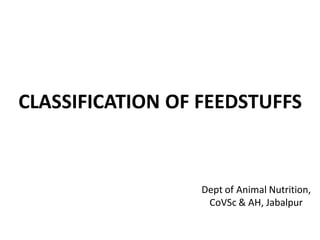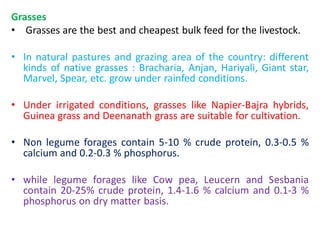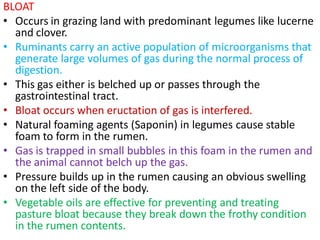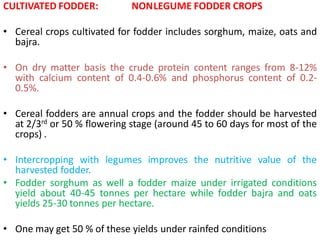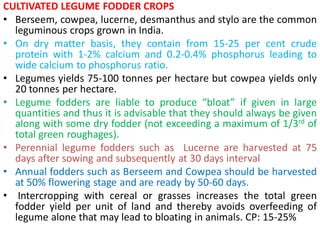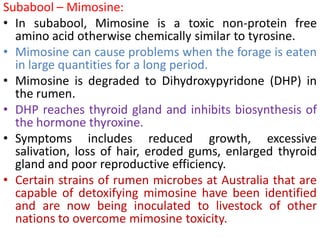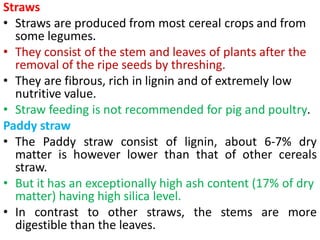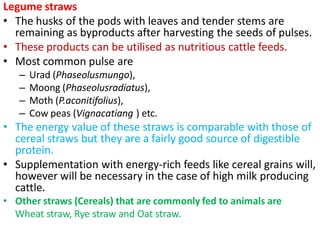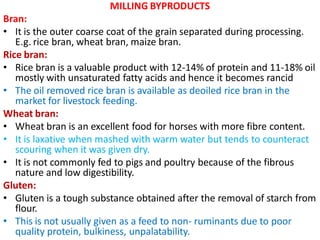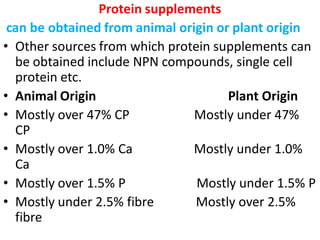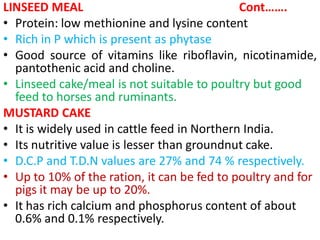This document provides classifications and descriptions of various feedstuffs and roughages. It discusses:
1) Roughages are bulky feeds high in fiber and low in nutrients. They include succulent and dry roughages. Concentrates are higher in energy and nutrients but lower in fiber.
2) Pastures are lands for grazing and their composition varies depending on growth stage, soil, and fertilizer. Cultivated grasses and legumes used as fodder are also described.
3) Various nutritional deficiencies and toxicities associated with feeding grasses are outlined, including nitrates, bloat, phytoestrogens, and goitrogens. Silage making and tree fodders are also summarized
